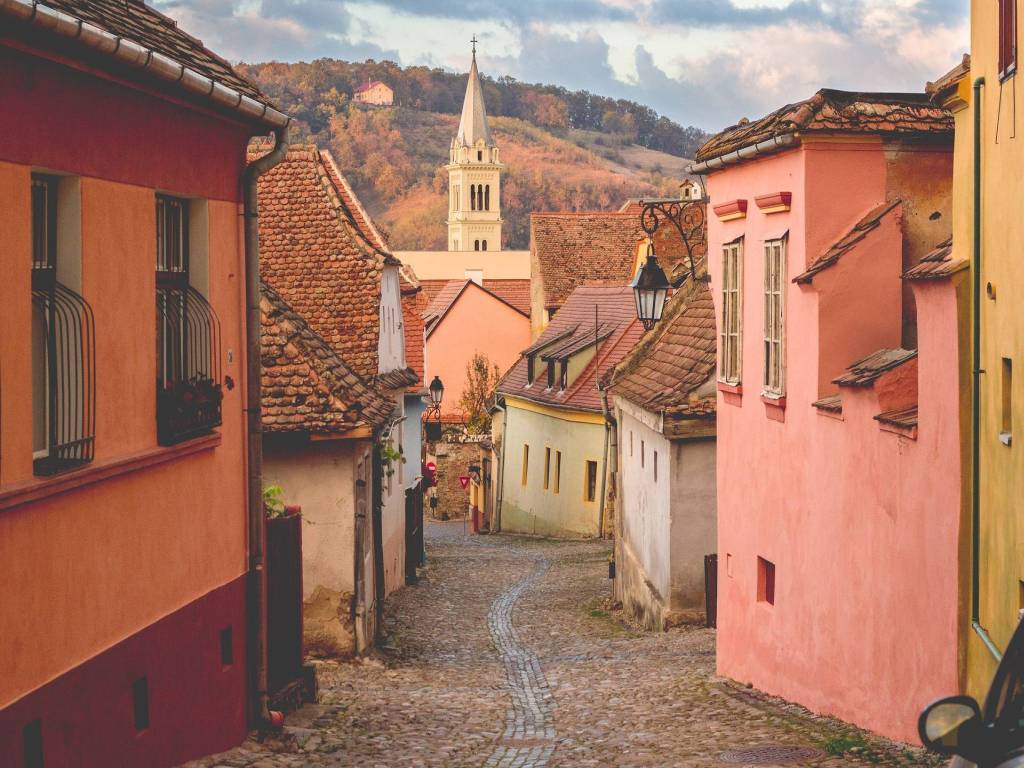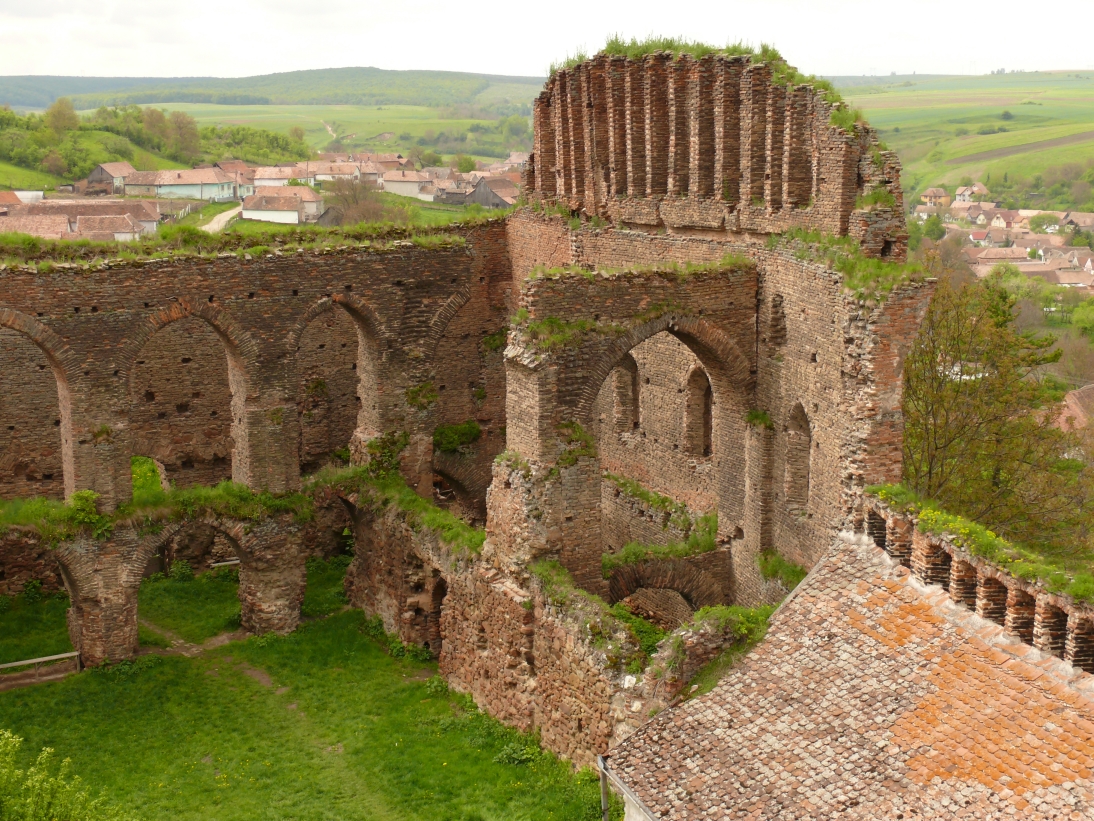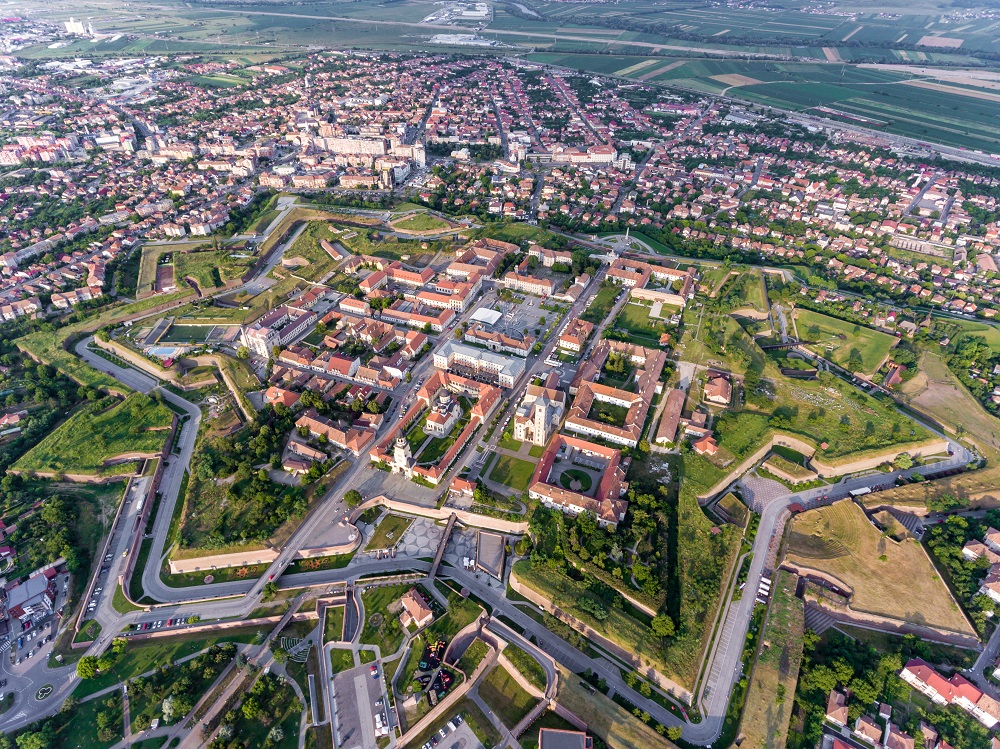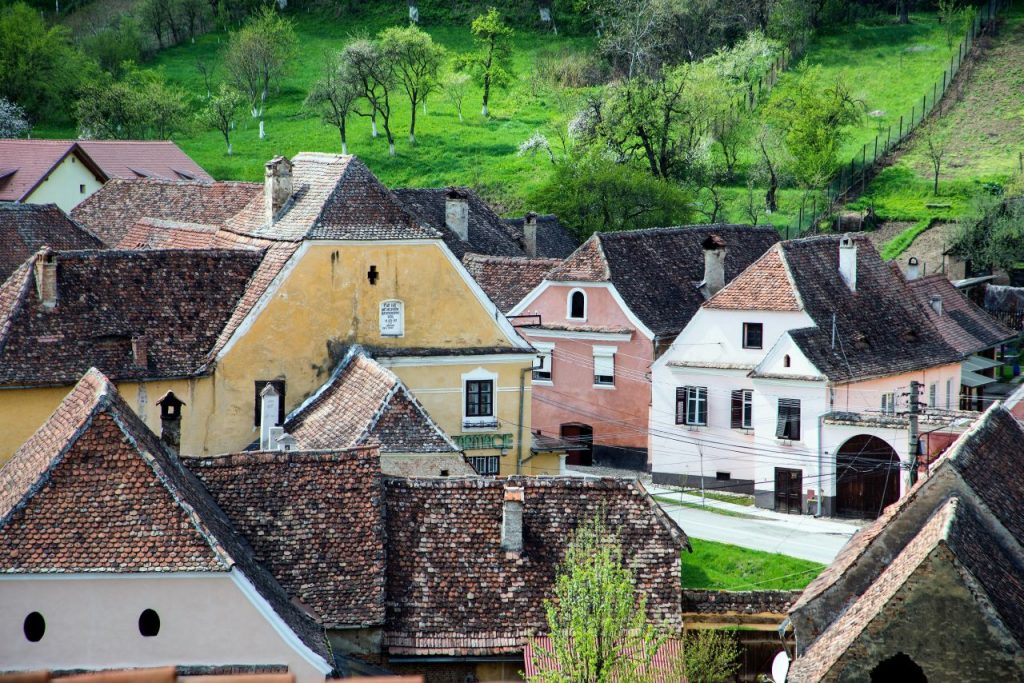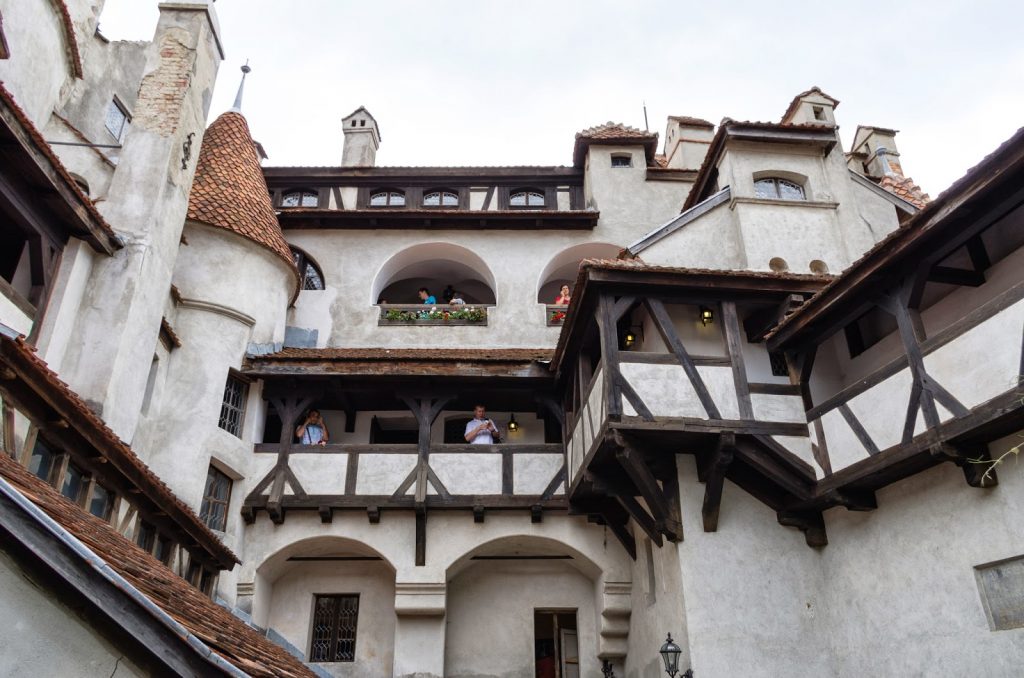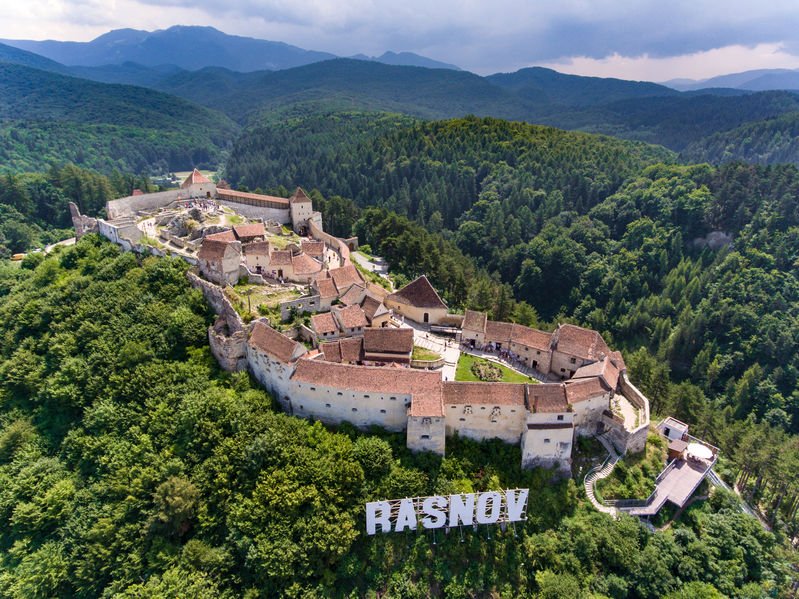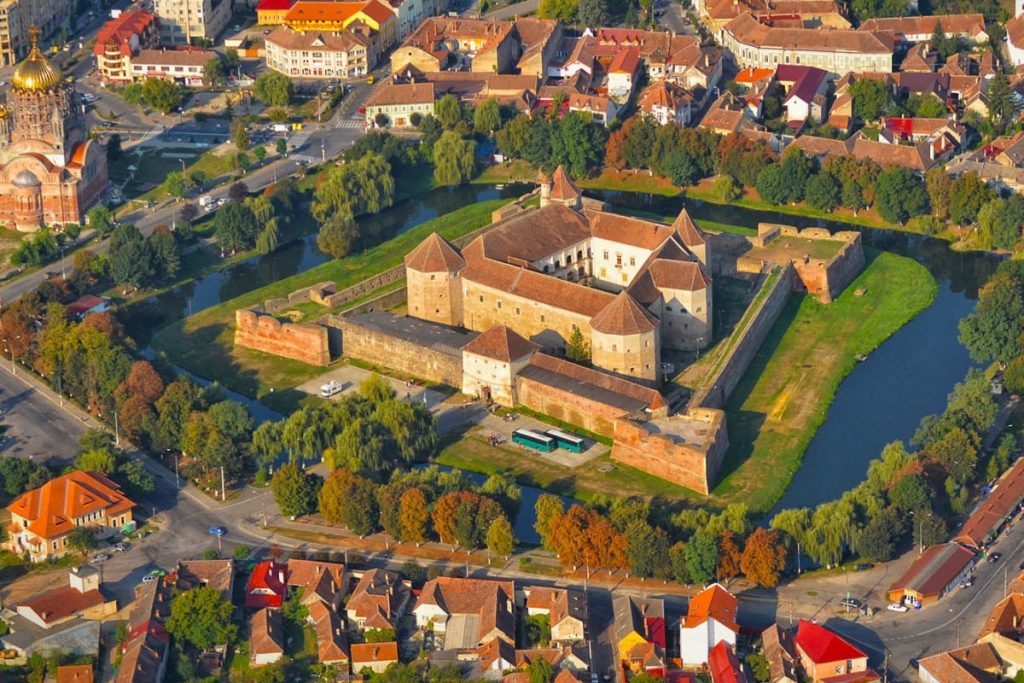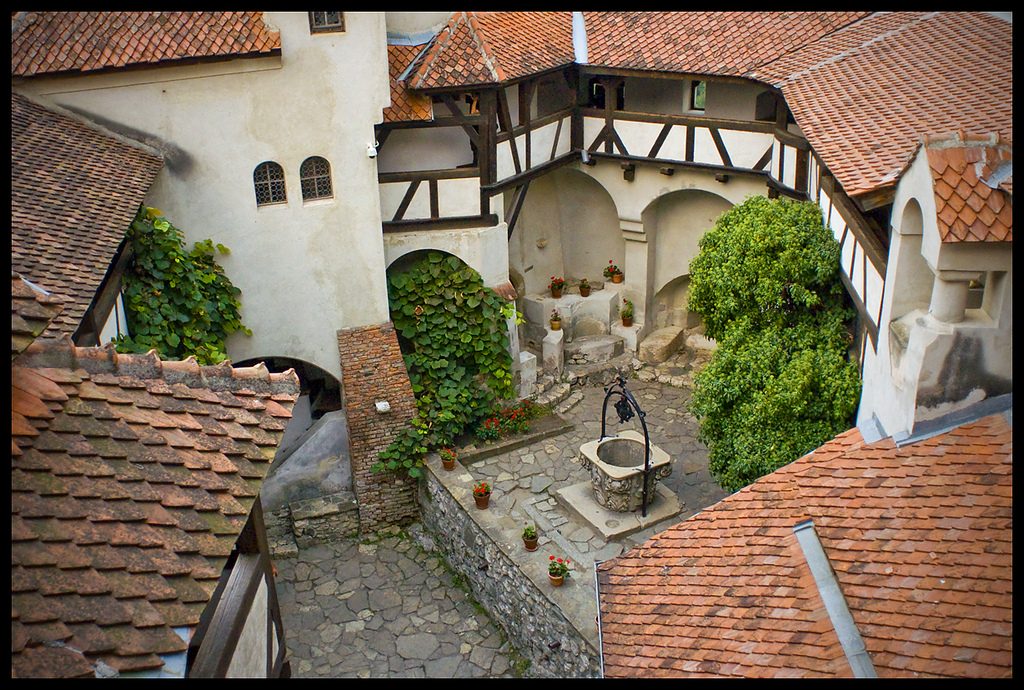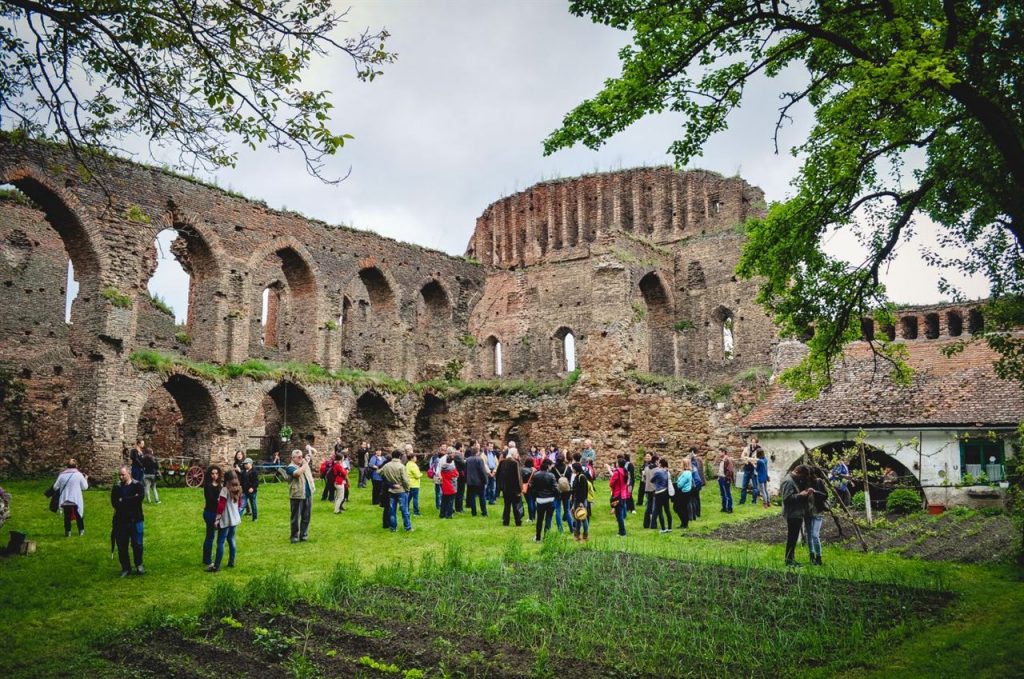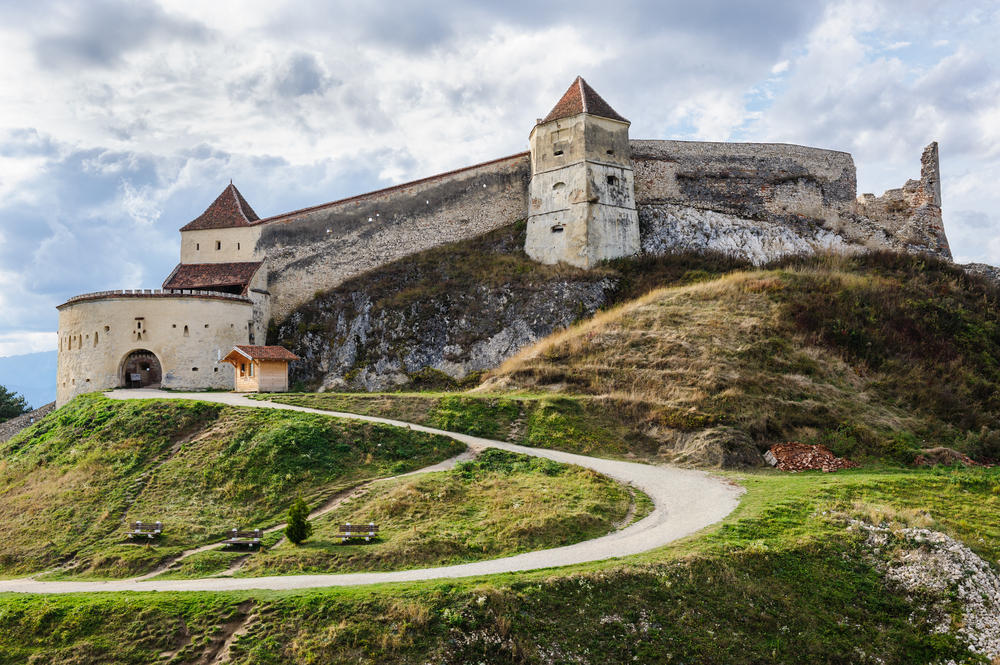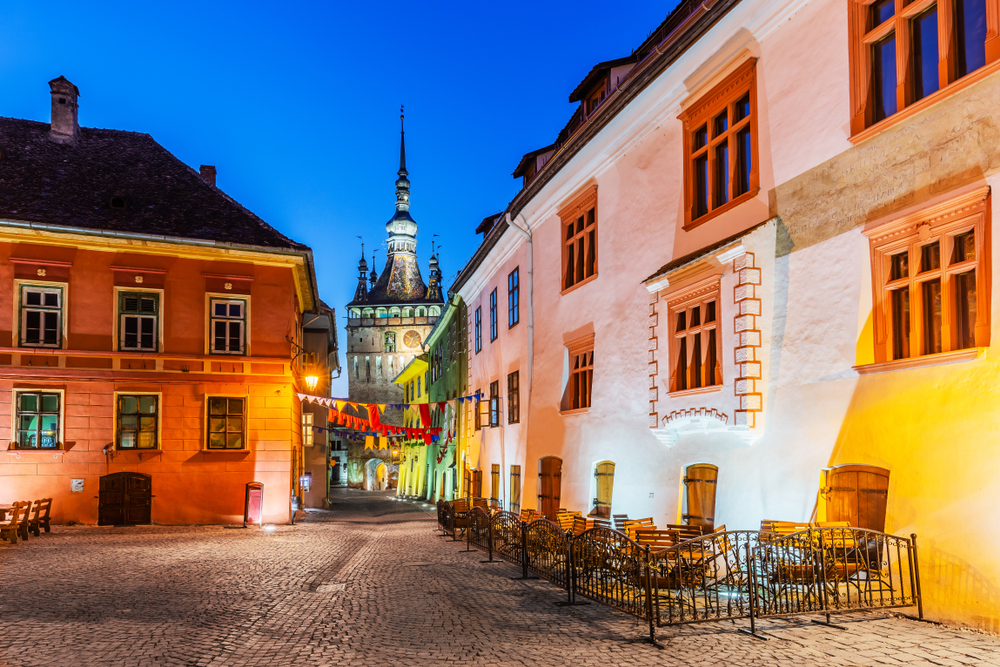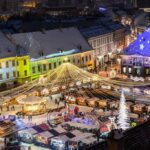In Transylvania, you will find a countryside with medieval walled towns where people still live and work in medieval buildings, built in the Middle Ages.
Since its first edition in 2007, the year the city held the European Capital of Culture title, the Christmas Market in Sibiu has become a successful event, to which the city owes a second tourist season. Started in a partnership with the Embassy of Austria in Romania, it is held in the Grand Square (Piața Mare or Großer Ring), at the heart of the old city.
Brașov holds the Christmas Market in Piața Sfatului, the center of its old town, and the starting point for exploring many of the tourist attractions in the area. Since Nuremberg is one of Brașov’s twin cities, one of the 40 market stalls at the market will be allotted to sellers coming from the German town.
We invite you in a 5-days adventure to discover the magic of winter holidays on Romanian realms.
Day 1 – Bran Castle & Rasnov Fortress
• Hotel pick-up in Bucharest at 7:00 am
• We visit the most emblematic tourist symbol of Romania: Bran Castle. Bran Castle is the only castle in all of Transylvania that actually fits Bram Stoker’s description of Dracula’s Castle, it is known throughout the world as Dracula’s Castle
• Traditional lunch
• Rasnov Fortress is located on a rocky hilltop in the Carpathian Mountains, 650 ft. above the town of Rasnov. First mentioned in an official document in 1331, the fortress was built by Teutonic Knights as protection against invading Tartars and was later enlarged by the local Saxon population
• The end of the day we will spend in Brasov. Fringed by the peaks of the Carpathian Mountains and resplendent with gothic, baroque and renaissance architecture, as well as a wealth of historical attractions, the medieval city of Brasov, located just three hours north of Bucharest, provides a great introduction to the region. Among Brasov’s best known historical and cultural attractions are the Council Square, the beautiful St. Nicholas Church, the Black Church – the largest Gothic church east of Vienna – so named because of its dark walls which survived a devastating fire in 1689, and the Brasov Fortress. We will visit the historical center of the city and the line of the old fortifications
• Arrival to the guesthouse
• Traditional food, along with fine red wine
Day 2 – Fagaras, Rupea Fortress And Viscri
• Breakfast
• Fagaras Fortress. Built in 1310 on the site of a former 12th century wooden fortress (burned by the Tartars in 1241), Fagaras was enlarged between the 15th and 17th centuries and was considered one of the strongest fortifications in Transylvania. The fortress was surrounded by a deep moat which, in times of war or social unrest, could easily be filled with water from a nearby mountain brook. A bridge over the moat provided the only access point. The fortress boasts three floors and five towers
• Traditional lunch
• Rupea Citadel is one of the oldest archaeological sites in Romania, the first signs of human settlements dating from the Paleolithic and early Neolithic. The first documentary attestation dates from 1324 when the Saxons revolted against King Charles I of Hungary and took refuge inside the citadel. According to archaeologists, the current citadel was built on the ruins of a former Dacian defense fort conquered by the Romans. The name of the citadel comes from Latin “rupes” meaning “stone”. From the 10th century, the citadel experienced a systematic expansion, so that in the 14th century it had a key strategic role, being the main linking point between Transylvania, Moldavia and Wallachia
• The last tourist attraction of the day is the Viscri Fortified Church. The Viscri fortified church is a Lutheran fortified church in Viscri in the Transylvania region of Romania. It was built by the ethnic German Transylvanian Saxon community at a time when the area belonged to the Kingdom of Hungary. Initially Roman Catholic, it became Lutheran following the Reformation. Together with the surrounding village, the church forms part of the villages with fortified churches in Transylvania UNESCO World Heritage Site
• Relaxation and traditional dinner at the guesthouse
Day 3 – Sibiu & Sighisoara
• Breakfast
• Sibiu it’s a pretty little town, very medieval and colorful, that was named as the European Capital of Culture in 2007. Sibiu was originally founded by Saxons, invited by the region’s Hungarian rulers to colonize the region and help defend its borders. Over time, the colony became a city citadel and a prosperous center of trade. You can still see that prosperity in Piata Mare, its main square that is as beautiful as it is vast. At one end is a Baroque palace built for Samuel von Brukenthal, the Governor of Transylvania in the late 1700s. It now houses the Brukenthal Art Museum, Romanian’s oldest museum, home to a collection of Romanian and Western art. We will visit the old city center, scattered with medieval buildings, cozy cafes and important touristic attractions such as the “Bridge of lies”, The Evangelic Church Tower where from we will admire the city panorama and the Tower of the Council
• We will serve the lunch in the oldest Romanian restaurant
• The second part of the day finds us in Sighisoara. Sighisoara is a small city in the Transylvania region of Romania, with a history dating back to the 1100s. Back then, the Hungarian king was begging Saxons to move to this part of the world in order to help defend his borders. German craftsmen and artisans took him up on it, and what resulted is today a fairy-tale-like fortified city in the heart of Romania. It’s no wonder this whole place is a UNESCO World Heritage site. With cobbled streets, colorful buildings, and a pedestrian-friendly Old Town, it’s difficult not to fall in love with Sighisoara. Climbing up the Clock Tower is an absolute must in Sighisoara because the views are beautiful. Parts of this building date back to the 14th century, and I’m sure you can understand why it was built — as a lookout point over the city walls. Sighisoara Citadel is the last inhabited fortress in Europe
• Traditional food, along with fine red wine
Day 4 – Biertan, Alma Vii & Slimnic Castle
• Breakfast
• We visit the fortified church of Biertan. Biertan is a UNESCO World Heritage Site and one of the oldest villages in Transylvania, going back to the 13th century. It hosts the most important fortified church in the region: the Seat of the former Evangelic Bishop
• Next stop will be the Evangelic church from Alma Vii, one of the most spectacular churches in Romania, and maybe the most romantic place as well. We will also take part in a complete guided tour
• The lunch will be served in a totally special environment – in the defense tower of the fortress. The food will be traditionally cooked and served, for us, just as for medieval noblemen
• The Slimnic Castle was presumably built in the XIII th century. In the XIV-XV th century’s it suffered some changes and in the XVIII th century it was rebuilt. Its walls reached 12 meters, its thickness 3 1 meters. The tower dates from the XIVth century. In the center of the castle there was a 70 m deep well, today it’s filled with scrap. The castle had many owners but because the costs of the maintenance were paid by the Slimnic dwellers, they considered it theirs
• Traditional food, along with fine red wine
Day 5 – Alba Carolina
• Breakfast
• The city of Alba Iulia, Alba County is one of the most important urban centers of Romania, a place of monumental historical significance, associated to the Great Union of 1918 and the coronation of the kings Ferdinand I and Mary, the first monarchs of Greater Romania. Its ancient medieval center, the Alba Carolina fortress, encloses between its walls several centuries old attractions laden with history, including Saint Michael’s Cathedral
• We start the tour of the fortress with the most important 3 attractions of the fortress: the cell where Horea stood before being executed and the prison (about which you can learn more from the Route of the Romanian Heroes), the Union Hall (the place where the Transylvanian Union Act was signed with Romania in 1918. Entrance is free) together with the Union Museum. The building was built in the 19th century and was used as a casino by the Austro-Hungarian army. Inside are exhibits from the Great Union
• From May to September, the Changing of the Guard ceremony takes place every day at 12:00 at noon, but it becomes more festive especially on Saturdays when, after the soldiers honor the South Gate of the Roman Castrum, the flag is erected in front of the Eugene of Savoy Bastion. Then the soldiers head for the artillery platform where a new flag is being raised and where they start the firing their cannons in honor of the Citadel’s flag and the guests of Alba Carolina
• Traditional lunch in a medieval restaurant
• Return to Bucharest
IMPORTANT NOTE:
- Sometimes, some of the places we intend to visit may be closed at that time. But don’t worry. We have prepared tourist attractions at least as interesting as the previous ones.
- We can organize this tour all year long.
- The tour can be optimized according to your wishes.
—————————————————————–
Talk to our tours expert
We are here to discuss about your next dream trip in Romania!
We can organize this tour all year long. The tour can be customized depending on the number of days you have available.
- call us : +40761.896.881 or just write us on whats app
- 9 am – 8 pm Monday through Sunday.
Otherwise, send an email anytime: office@wildromania.ro
For booking please contact us with at least 3 months in advance in the extra season and at least 5-6 months in advance during the full season (in the summer tim
e), to check the availability. We will offer our support for all the aspects related to the trip planning, including the flight schedule.
All you have to do is to contact us as soon as possible, in order to have enough time at disposal for all the organizational details.


